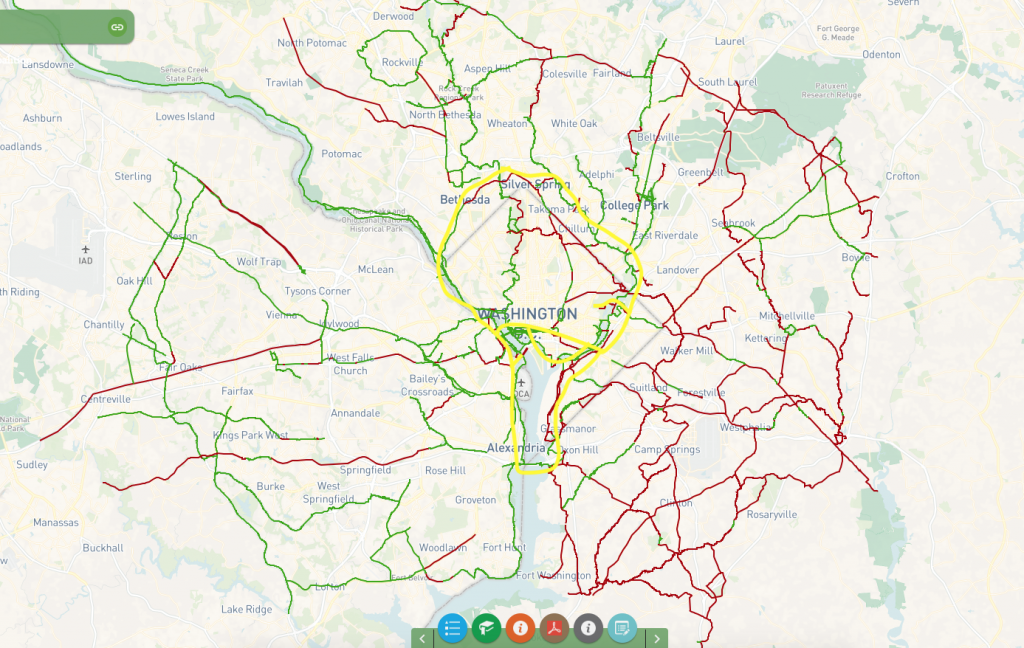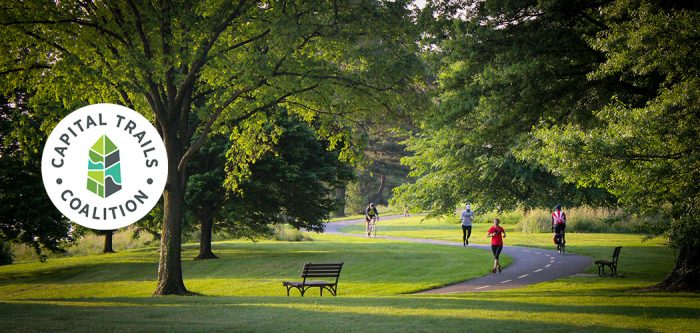WASHINGTON, DC — The National Capital Transportation Planning Board (TPB) voted Wednesday to approve actions to expand its National Capital Trail to a broader trail network, including the trails identified by the Capital Trails Coalition.
The 842-mile Capital Trails Network, as envisioned by the Capital Trails Coalition, covers Washington DC, Prince George’s County, Montgomery County, Arlington County, Fairfax County and the City of Alexandria. The Capital Trails Network includes the trail priorities established by those jurisdictions.
By approving the resolution, the TPB chose to expand the scope of the National Capital Trail to include the trails and trail projects within the Capital Trails Network, as well as directing TPB staff to include the outer jurisdictions (including Prince William, Loudoun, Frederick, and Charles counties) in a regional trail plan. In doing so, the Capital Trails Network is now functionally included in the TPB’s Unified Planning Work Program.

“This action by the TPB expands their trail plan from 60 miles to 842 miles and will eventually include trails in all of the member jurisdictions of the Transportation Planning Board,” said Jack Koczela, Chair of the Capital Trails Coalition. “The Capital Trails Coalition is pleased to see the Coalition’s two years of research and mapping make its way into this important regional transportation plan.”
Through data gathering and quality control over the course of 2018, the Capital Trails Coalition has updated the trail mileage in the region. Today, there are 456 miles of existing trails and 386 miles of planned trails in the Capital Trails Network. That puts the total mileage of the Capital Trails Network at 842 miles.
The increase in mileage is due to improved data from the counties during the latest round of data updates, as well as the recent adoption of the Prince George’s County Trails Master Plan and Montgomery County Bike Master Plan.
Every planned trail within the network must meet the Coalition’s criteria for network inclusion, which includes specifications for safety, measured width, surface requirements, connections to job centers, schools, and parks among many other requirements.
The planned trails will close gaps in the regional trail network and connect smaller trails to high-capacity trails. The Capital Trails Network also includes and connects to larger regional trails, such as the September 11th National Memorial Trail, the East Coast Greenway, the American Discovery Trail, the C&O Canal Towpath, and the Potomac Heritage National Scenic Trail.
A world-class, seamless trail network will provide safe places for people to exercise; encourage active transportation; save people money on transportation, exercise, and recreation; provide an option for folks who cannot afford other transportation options; help regional jurisdictions meet environmental goals by reducing congestion, decreasing vehicle miles traveled, improving air quality and lowering carbon emissions.
About the Capital Trails Coalition
The Capital Trails Coalition, founded in 2015, seeks to create a world-class network of multi-use trails that are equitably distributed throughout the Washington D.C. metropolitan region. The Capital Trails Network will transform public life by providing healthy, low-stress access to open space and reliable transportation for people of all ages and abilities.
The Capital Trails Coalition is a collaboration of over 60 organization members, including the Rails-to-Trails Conservancy, the Washington Area Bicyclist Association, various business improvement districts and citizen groups. The National Park Service and other government agencies serve as advisory members.
Find the press release here.


